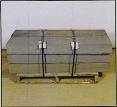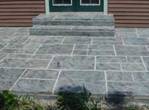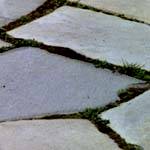Natural Bluestone Paver Shapes
Bluestone Pavers are a quarried product and so can be produced in any type of shape you may desire. Once the Bluestone is excavated from the ground it is in a block form. The blocks of Bluestone are then taken to factories all over the world. The blocks of bluestone are then cut into shapes using jigsaw machines. |
 |
The most common shape of Bluestone Pavers used today is the rectangular shape.
 |
For dark blue-grey pavers, the larger the paver the better. All different types of Bluestone Paver shapes can be laid out to create natural and unique affects. These Bluestone Paver shapes are commonly used for outdoor applications. |
The wide variety of shapes available today can help anyone create the ideal walkway, patio, stoned pathway, pool decking, or garden feature.
Types of Shapes
Bluestone Pavers are produced in a block from and can be cut down to any shape and size. This gives anyone the opportunity to create there own exclusive design for a wide range of Bluestone Paver applications.
| The most popular shapes used today in Bluestone Paving are the rectangular paver and the oblong paver. The triangular paver and the diamond shape paver are also commonly used. A combination of all the shapes above can also be used for innovative and decorative designs. |  |
Another factor that helps play a big part to your paver shapes is the color. Bluestone being a quarried product is never the same in color. This creates a wonderful affect where various types of shapes are included. As the color never runs the same from paver to paver.
 |
Irregular Bluestone Paver ShapesIrregular Bluestone Paver shapes are also commonly used today. This is where many broken pieces of Bluestone, form various different shapes. Numerous combinations of Bluestone Pavers are naturally broken off when being cut to shape and size. The irregular Bluestone Paver shapes aren’t interlocked together; they are left with a tiny gap filled with sand or weed. This is commonly used outdoors in gardens, as feature pieces throughout the centre of a drive way, or around a pool. |





